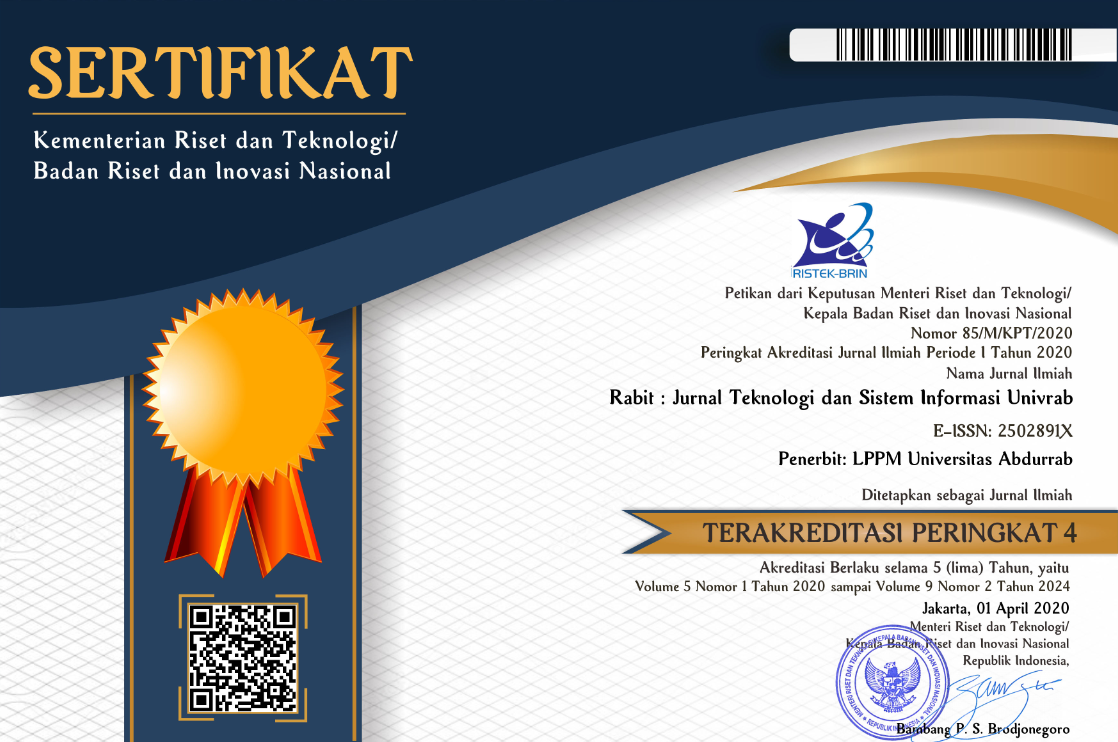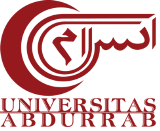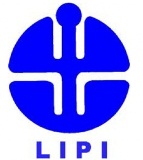EFEKTIVITAS PENERAPAN INTERNET MARKETING 4.0 TERHADAP PEMESANAN TIKET TRAVEL PEKANBARU DURI DUMAI
Abstract
This research was conducted at PT. Jasa Mulya Trans Gemilang, a company engaged in transportation services by routes of Pekanbaru-Duri-Dumai. PT. Jasa Mulya Trans Gemilang has two websites that are quite good on the search engines of Google: Bing and Yahoo. It also carries out Advertising Promotions through Social Media and Google Ads which have been running for a long time and until the time this research was conducted, there was no measurement of how well the effectiveness of Internet Marketing that has been running at PT. Jasa Mulya Trans Gemilang. Measuring the Effectiveness of an Internet Marketing Program is indispensable for consideration and promotional strategies that can be carried out for the future by the company. One of the ways to measure the effectiveness of Internet Marketing Utilization was the EPIC Model. In the EPIC Model, there were four variables which were investigated to measure effectiveness, namely Empathy, Persuasion, Impact and Communication. Respondents in this study were the people of Pekanbaru and its surroundings who ordered travel tickets with destination of Duri and Dumai Cities. After conducting this research, it was obtained that the effectiveness levels of Internet Marketing Application of travel ticket reservations for Pekanbaru-Duri-Dumai which was measured in four EPIC dimensions were as follows: the value of Emphaty was 4.09, the Persuasion was 4.11, the Impact was 3.88, and the Communication was 3.99. From the four EPIC dimensions, the average result of the EPIC Model or EPICrate was 4.02 that could be interpreted on an effective scale. This means that in this research, the implementation of Internet Marketing at PT. Jasa Mulya Trans Gemilang through the internet consisting of Website, Social Media and Google Ads was effective.
References
A. Savitri, Revolusi Industri 4.0 : Mengubah Tantangan Menjadi Peluang di Era Disrupsi 4.0. Yogyakarta: Genesis, 2019.
R. K. Muljono, Digital Marketing Concept. 2018.
S. Asiah, “Efektivitas Kinerja Guru,” Ef. KInerja Guru, vol. 4, no. 2, pp. 1–11, 2016.
Alisman, “Analisis Efektivitas Dan Efisiensi Manajemen,” J. Ekon. dan Kebijak. Publik Indones., 2014.
B. Musty, “Membangun Branding Melalui Pengembangan Internet Marketing Dalam Sektor Pendidikan,” vol. 1, no. 2, pp. 1–6, 2012.
K. Catur Bagus Wicaksono, “Mengukur Efektivitas Social Media Bagi Perusahaan,” Binus Bus. Rev., 2013.
P. Azaria, “Pengaruh Internet Marketing Terhadap Pembentukan Word Of Mouth Dan Efektivitas Iklan Dalam Meningkatkan Brand Awareness (Studi pada Follower Akun Twitter Pocari Sweat di Jejaring Sosial Twitter),” J. Adm. Bisnis S1 Univ. Brawijaya, vol. 13, no. 1, p. 83875, 2014.
A. M. Afrilia, “Digital Marketing Sebagai Strategi Komunikasi Pemasaran ‘Waroenk Ora Umum’ Dalam Meningkatkan Jumlah Konsumen,” J. Ris. Komun., 2018.
A. D. Mukhoyaroh and R. Susilawati, “Marketing 4.0 Untuk Usaha Mikro Tas Tali Kur Desa Mojongapit Kecamatan Jombang Kabupaten Jombang Jawa Timur,” J. Terap. Abdimas, 2019.
P. Kotler, H. Kartajaya, and D. H. Hooi, “Marketing 4.0: Moving From Traditional To Digital,” in Asian Competitors, 2019.
B. Riyantoro, “Efektivitas Iklan Melalui Jejaring Sosial Sebagai,” Proceeding PESAT (Psikologi, Ekon. Sastra, Arsit. Tek. Sipil), 2013.
D. R. Indah and Z. Maulida, “Analisis Efektivitas Iklan Media Televisi Mengunakan EPIC Model (Studi Kasus Produk A Mild di Kota Langsa),” J. Penelit. Ekon. Akunt., vol. 1, no. 2, pp. 137–149, 2017.
A. T. Wijaya, H. Amani, and W. Tripiawan, “Analysis effectiveness of social media ad as promotional media ( study case : instagram taya . Id ) Abstrak Kata Kunci : Efektivitas Iklan dan EPIC Model A,” vol. 5, no. 1, pp. 1123–1130, 2018.
D. C. Durianto and Liana, Inovasi pasar dengan iklan yang efektif. Jakarta: Gramedia, 2003.

This work is licensed under a Creative Commons Attribution-NonCommercial-ShareAlike 4.0 International License.
Copyright Notice
The copyright of the received article shall be assigned to the publisher of the journal. The intended copyright includes the right to publish the article in various forms (including reprints). The journal maintains the publishing rights to published articles. Therefore, the author must submit a statement of the Copyright Transfer Agreement.*)
This work is licensed under a Creative Commons Attribution-NonCommercial-ShareAlike 4.0 International License.
In line with the license, authors and any users (readers and other researchers) are allowed to share and adapt the material only for non-commercial purposes. In addition, the material must be given appropriate credit, provided with a link to the license, and indicated if changes were made. If authors remix, transform or build upon the material, authors must distribute their contributions under the same license as the original.
Please find the rights and licenses in RABIT : Jurnal Teknologi dan Sistem Informasi Univrab. By submitting the article/manuscript of the article, the author(s) accept this policy.
1. License
The non-commercial use of the article will be governed by the Creative Commons Attribution license as currently displayed on Creative Commons Attribution-NonCommercial-ShareAlike 4.0 International License.
2. Author’s Warranties
The author warrants that the article is original, written by stated author(s), has not been published before, contains no unlawful statements, does not infringe the rights of others, is subject to copyright that is vested exclusively in the author and free of any third party rights, and that any necessary written permissions to quote from other sources have been obtained by the author(s).
3. User Rights
RABIT's spirit is to disseminate articles published are as free as possible. Under the Creative Commons license, RABIT permits users to copy, distribute, display, and perform the work for non-commercial purposes only. Users will also need to attribute authors and RABIT on distributing works in the journal.
4. Rights of Authors
Authors retain all their rights to the published works, such as (but not limited to) the following rights;
- Copyright and other proprietary rights relating to the article, such as patent rights,
- The right to use the substance of the article in own future works, including lectures and books,
- The right to reproduce the article for own purposes,
- The right to self-archive the article,
- The right to enter into separate, additional contractual arrangements for the non-exclusive distribution of the article's published version (e.g., post it to an institutional repository or publish it in a book), with an acknowledgment of its initial publication in this journal (RABIT : Jurnal Teknologi dan Sistem Informasi Univrab).
5. Co-Authorship
If the article was jointly prepared by other authors, any authors submitting the manuscript warrants that he/she has been authorized by all co-authors to be agreed on this copyright and license notice (agreement) on their behalf, and agrees to inform his/her co-authors of the terms of this policy. RABIT will not be held liable for anything that may arise due to the author(s) internal dispute. RABIT will only communicate with the corresponding author.
6. Royalties
This agreement entitles the author to no royalties or other fees. To such extent as legally permissible, the author waives his or her right to collect royalties relative to the article in respect of any use of the article by RABIT.
7. Miscellaneous
RABIT will publish the article (or have it published) in the journal if the article’s editorial process is successfully completed. RABIT's editors may modify the article to a style of punctuation, spelling, capitalization, referencing and usage that deems appropriate. The author acknowledges that the article may be published so that it will be publicly accessible and such access will be free of charge for the readers as mentioned in point 3.
 PDF (Bahasa Indonesia)
PDF (Bahasa Indonesia)
 Abstract views: 553
Abstract views: 553
 downloads: 621
downloads: 621

 :
:












